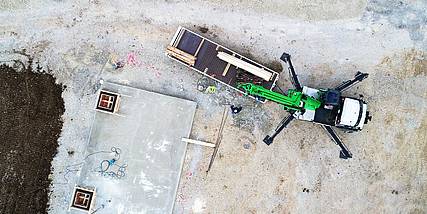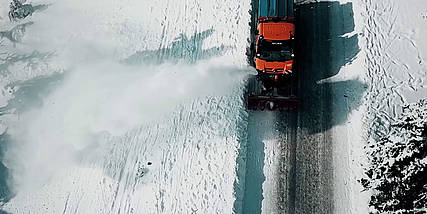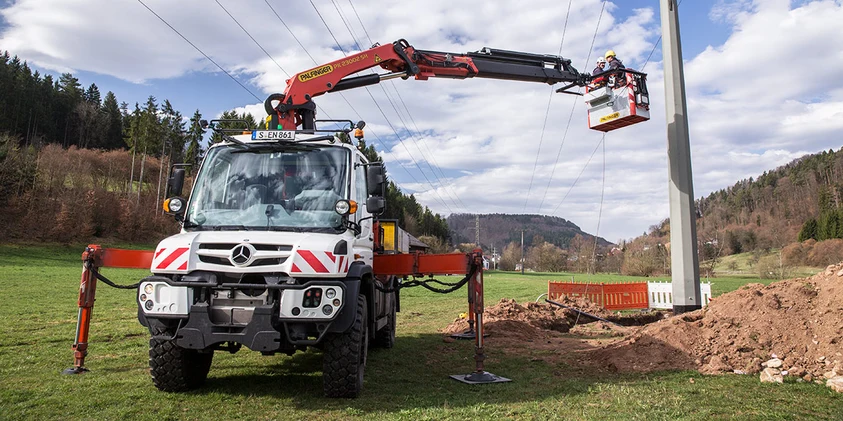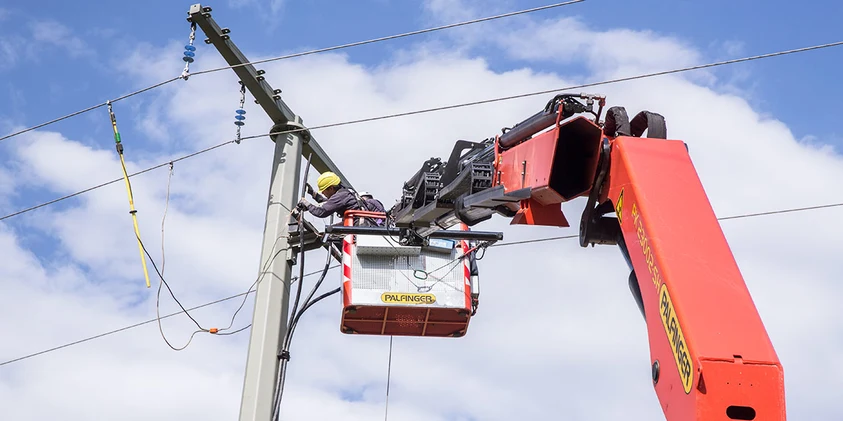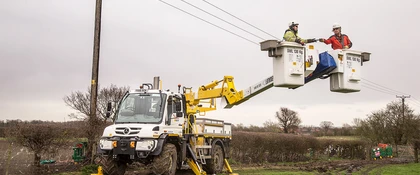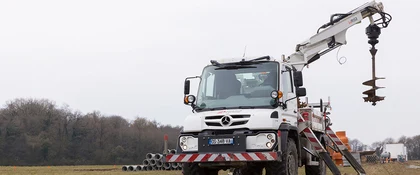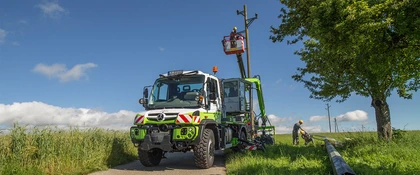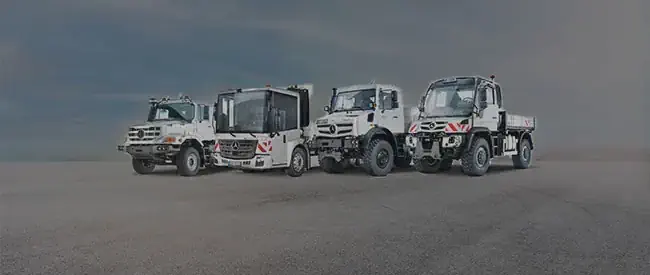Mobile even in mud.
The rain is getting heavier, but the job will still be finished on time. A colleague is informed by phone that the cable can be reconnected to the grid. The old, sawn-up pylon and the tools are loaded up and secured. The Unimog ploughs through the muddy ground. "It's a good thing we insisted on tractor tyres, they're well worthwhile," Jonas Kälberer comments. When the rough-profiled 22.5 inch tyres are back on asphalt, he presses a button to increase the tyre pressure again. "The mud is now not an issue for us. That's because the wheels are enclosed, and our Unimog has wading capability to a depth of 80 centimetres." A short time later, one of the secrets of why the Unimog is so popular as an autonomous work machine is revealed: a high-performance voltage converter as a power generator. "It provides 3.6 kilowatts of power, which is enough for all our hand-operated equipment. That means we can also use tools such as an angle grinder, and can even carry out welding if necessary."
The mud is now not an issue for us.
Jonas Kälberer, Team Leader Netze BW
Netze BW relies on a range of different Unimog variants.
While Klevenz's crew are at work with their U 5023, operations manager Hans-Peter Theurer is coordinating a 16.5 tonne U 530. The implement carrier features a drill, but is rarely used for replacing pylons. "We don't replace even 15 a year," Theurer reports. "What we do a lot is work on roof supports, as well as often replacing transformers. That means our Unimog often has to pull an emergency power unit or some other item of auxiliary equipment." Many of the buildings in the surrounding villages do not yet have underground cabling; the power supply is routed via the roofs. "If problems occur, or when upgrades are due, it's up to us. So our main workplace is a cage."
Erecting pylons out of the ground up to overhead cables is also part of the job. It's hard work, because newly installed cables have to be attached to the terminal tower. Jürgen Blöchle and apprentice Janis Klaritsch are working on just such a job. Florian Grupp is at the wheel of the Unimog. The crew pulls aluminium cables with a 300 mm² cross-section into the pylon. It's no job for a weakling because, as Grupp explains, "a metre of cable weighs a kilogram". Working from the cage, they pull the cables one by one up the 18 metre pylon. The three men take eight hours to install all the cables.
"The specification is that the 20 kV cables have to be sunk one metre deep into the ground." To do that, they park the U 530 parallel to the cable route, allowing an adequate safety clearance. The crane has to be deployed far enough to lift the engineers up to the necessary working height in the cage. That's no problem, because the job can carry a tonne even at full extension. Finally, working from the cage, Florian Grupp must position himself properly to secure the cables to the fixture on the top of the pylon.
Once everything is secured, he uses his power screwdriver to fix the cable ends in their terminals. By the late afternoon, the new 20 kV overhead cable section is ready to be connected. The Unimog has done its job with supreme assurance.
Source: Unimog magazine 2/2018
Text: Gerfried Vogt-Möbs
Photos: Henrik Morlock





